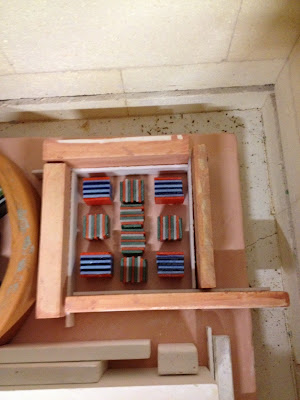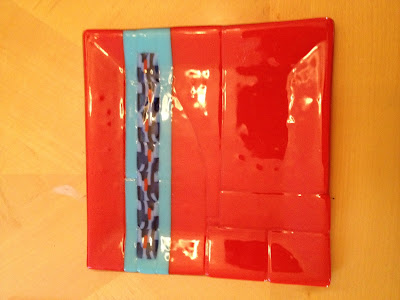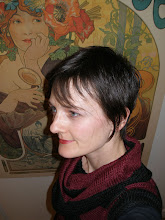Glass fusing and slumping
It's nice to have an artistic outlet. This year I took two courses in glass fusing and slumping offered by The Crucible, which was taught by Mary White. Glass is a fascinating medium, with its rich colors and varying degrees of translucency. When talking about glass art most people think of glass blowing, thanks in part to Dale Chihuly. While glass blowing is another course offered at the Crucible, fusing and slumping involves layering cut shapes of glass atop one another. The piece is heated to a temperature specific for fusing the pieces together: lower temps create a "tack fuse", creating raised surfaces, while higher temps melt the pieces into one another more completely. The resulting slab of glass can then be placed over a ceramic mold, to be "slumped" into its final shape at a low temperature.
We covered a wide variety of techniques in class. Below are some pictures of my projects:
Dutch painter Piet Mondrian is a favorite of mine. I thought it would be straightforward to mimic his work in glass. I cut out the shapes, arranged them on a clear base, and then filled the gaps between pieces with black frit (ground glass) to give the appearance of lines.
Pattern bars are so much fun to work with. Pattern bars are fused stacks of glass, which are cut into chunks with a saw. Arranged within a barrier for heating, the bars melt and spread until they reach the edge of whatever enclosure you have made. The results can be unpredictable and sometimes psychedelic. You have to carefully calculate the volumes of your pieces to ensure they don't spread too thin upon heating.
This orange plate contains blue accents made from pattern bars.
When I saw this beautiful blue glass I wanted to do something water-themed with it. This project used a technique called "kiln carving". You take a thick paper made of heat-resistant fiberglass and cut shapes out of it. Then you place a sheet of glass on top of it and heat it, creating raised forms.
This tea light holder required multiple steps: I had to hand-cut all the flame shapes out with a ring saw, fuse them to a base, and then use kiln-carving to create the depressions for the candles.
This final project contains lots of thin glass rods called "stringers". They're quite easy to bend over a candle flame. I spent several hours with a candle and forceps bending them into shapes, which were then arranged on a plain white background. You can see how it looked before and after firing. I would like to make some larger pieces in this vein.
Labels: Crucible, fusing, Glass, kiln-carving, Mary White, pattern bars, slumping













